Turkey, a land where continents collide, is a mesmerising fusion of history, culture, and stunning landscapes. Straddling the boundaries of Europe and Asia, it offers a kaleidoscope of experiences that entice travellers from around the globe. This article guides you through the top 10 must-see attractions in Turkey, each a testament to the nation’s rich heritage and breathtaking natural beauty.
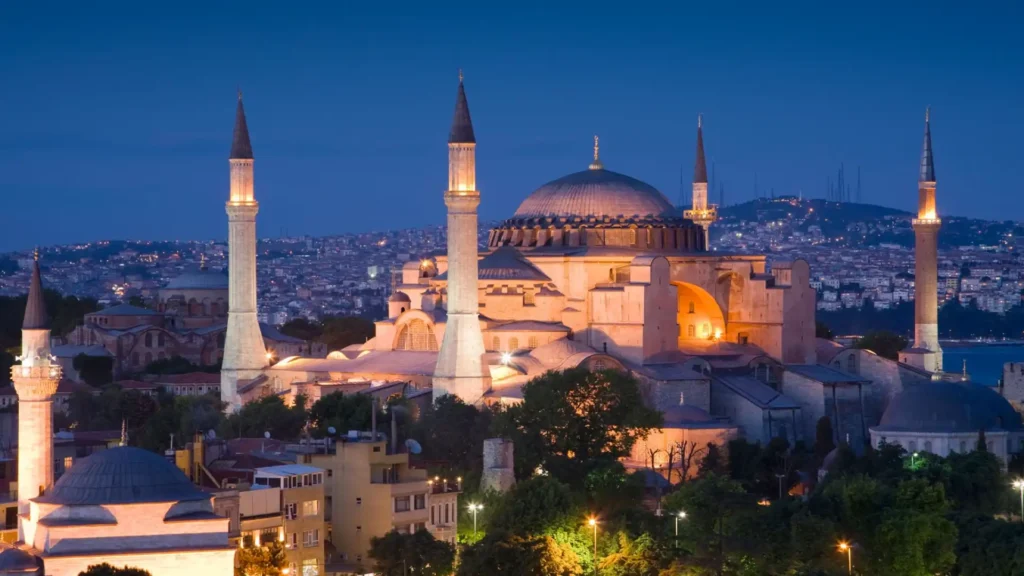
Hagia Sophia, with its grand dome and intricate mosaics, stands as a symbol of Istanbul’s complex history. Originally built as a Christian basilica in the 6th century, it was transformed into a mosque after the Ottoman conquest and now serves as a museum. This architectural marvel reflects a blend of Byzantine and Islamic influences, making it a testament to the city’s diverse past.
The interior of Hagia Sophia is as awe-inspiring as its history. The central dome, considered an engineering marvel, soars skywards, creating an ethereal atmosphere enhanced by the light filtering through its windows. The walls, adorned with Christian and Islamic art, tell stories spanning centuries.
Beyond its architectural grandeur, Hagia Sophia is a symbol of religious harmony and transition. It’s a place where visitors can walk through time, witnessing the evolution of art, culture, and religion in this historic city.
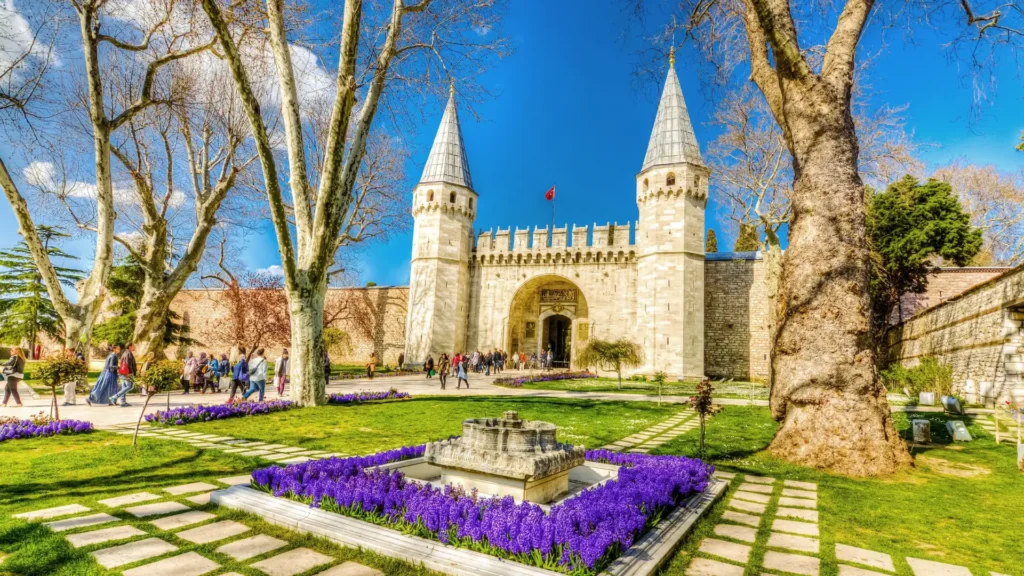
Topkapi Palace, once the heart of the Ottoman Empire, offers a glimpse into the opulent lifestyle of sultans. With its elaborate courtyards, exquisite pavilions, and panoramic views of the Bosphorus, the palace is a treasure trove of history and art.
The Harem, a secluded part of the palace, tells the intriguing tales of palace intrigues and the private lives of sultans and their families. The Imperial Treasury, meanwhile, is a dazzling display of jewels, ornaments, and royal artifacts, showcasing the empire’s wealth and artistic prowess.
Today, Topkapi Palace serves as a museum, bringing Ottoman history to life. Each corner of the palace, from the lush gardens to the ornate chambers, offers a unique story, making it an unmissable destination for history enthusiasts.
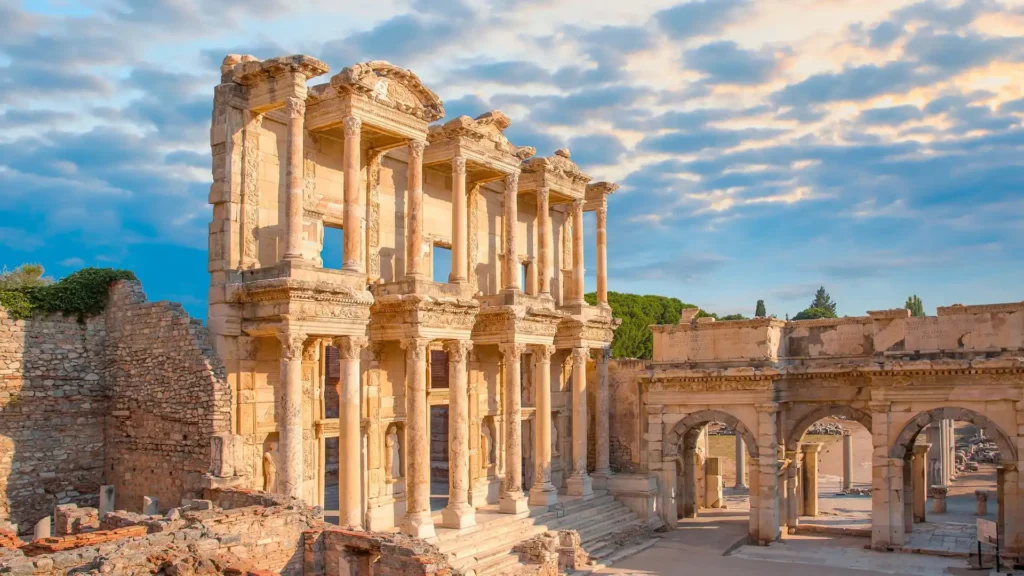
Ephesus, one of the best-preserved ancient cities in the Mediterranean, is a journey back in time. Once a thriving port city, it boasts grandiose structures like the Library of Celsus and the Great Theatre, which hosted gladiator fights and theatrical performances.
Ephesus holds a special place in Christian history as well. It’s believed to be the final resting place of the Virgin Mary and a significant city for the Apostle Paul. The Temple of Artemis, one of the Seven Wonders of the Ancient World, though now in ruins, speaks of the city’s former glory.
Walking through Ephesus is like wandering through an open-air museum. Each stone and column has a story, be it of ancient commerce, politics, or religion, making it a captivating experience for history buffs and casual visitors alike.

Cappadocia is a fantasy land made real. Known for its “fairy chimneys” – towering rock formations – and ancient cave churches, it offers a landscape that seems straight out of a dream. The region’s unique geological formations are the result of volcanic eruptions and erosion over millennia.
The cave dwellings and churches carved into the rocks are a highlight of Cappadocia. These ancient abodes and places of worship, adorned with frescoes, provide insight into the early Christian communities that once thrived here.
A hot air balloon ride over Cappadocia is a must-do for visitors. Floating over this lunar landscape at sunrise offers breathtaking views and an unforgettable experience, showcasing the region’s beauty from a unique perspective.

Pamukkale, meaning “cotton castle” in Turkish, is a natural wonder consisting of terraced mineral pools formed by calcium-rich springs. These snow-white terraces, set against the blue sky, create a stunning visual contrast.
Since ancient times, Pamukkale’s thermal waters have been reputed for their healing properties. Visitors can bathe in these therapeutic waters, just as the Romans did centuries ago.
Adjacent to Pamukkale is the ancient city of Hierapolis, an important spa center in Roman times. The ruins, including a well-preserved theatre and a vast necropolis, offer a fascinating glimpse into the region’s historical significance.
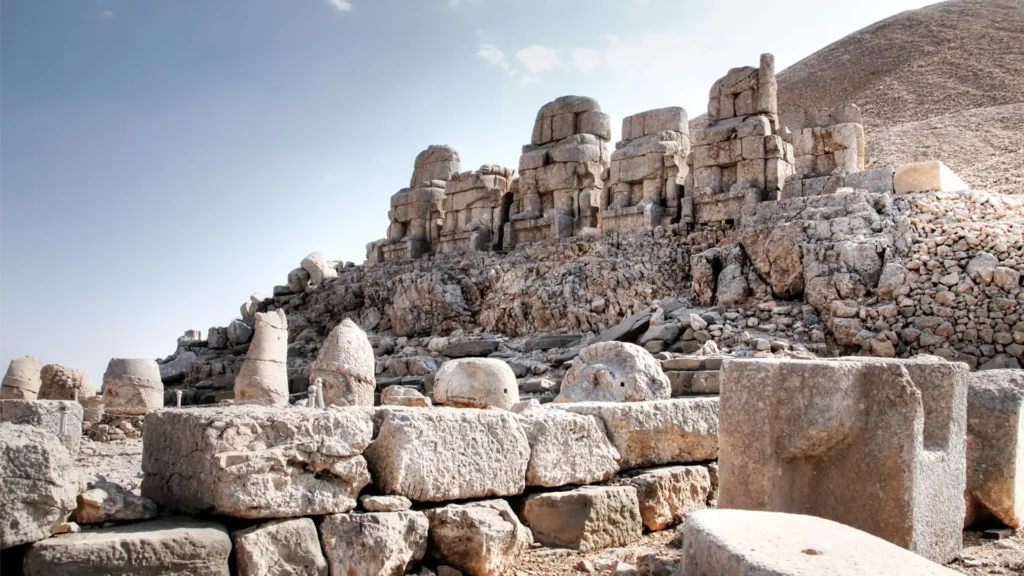
Mount Nemrut, a UNESCO World Heritage Site, is famous for its gigantic statues and tomb-sanctuary dedicated to King Antiochus of Commagene. The colossal heads and animals, now scattered around the summit, create an eerie yet majestic atmosphere.
The summit of Mount Nemrut is a popular spot for watching sunrise and sunset. The way the light plays on the statues and the surrounding landscape is truly magical, making it a photographer’s paradise.
The site reflects the syncretism of the Commagene kingdom, where Persian, Greek, and Armenian influences merged. This cultural blend is evident in the style of the statues, combining Greek and Persian artistic traditions.
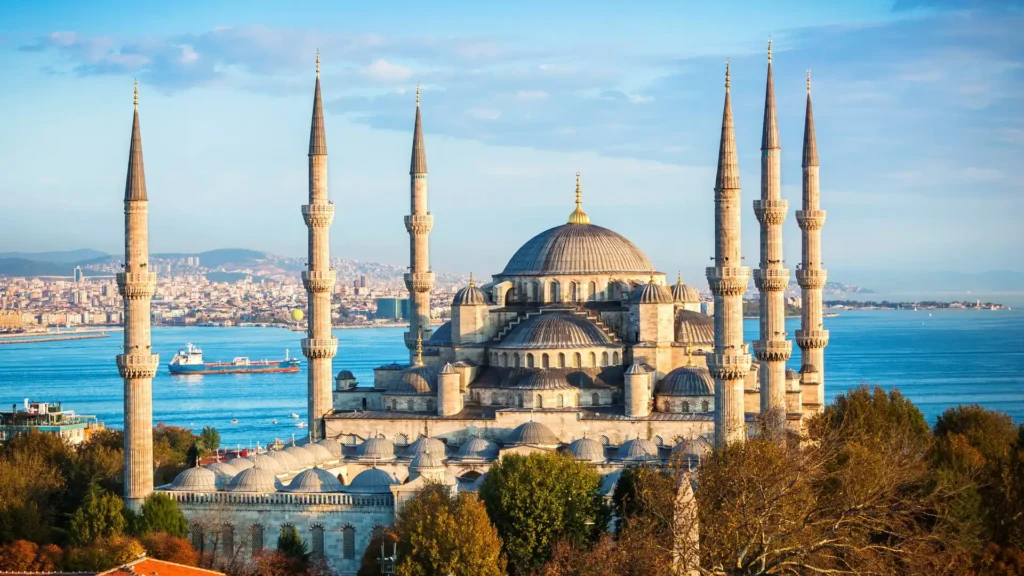
The Blue Mosque, also known as Sultanahmet Camii, is an iconic symbol of Istanbul. Famous for its six minarets and magnificent blue tilework, the mosque epitomizes the height of Islamic architecture.
Inside, the Blue Mosque is a vision of beauty. Over 20,000 blue tiles line its interior, and the intricate designs feature flowers, trees, and geometric patterns, creating a serene and spiritual ambiance.
While it remains an active place of worship, the Blue Mosque also welcomes thousands of tourists every year. Visitors are invited to experience its grandeur while respecting its religious significance.
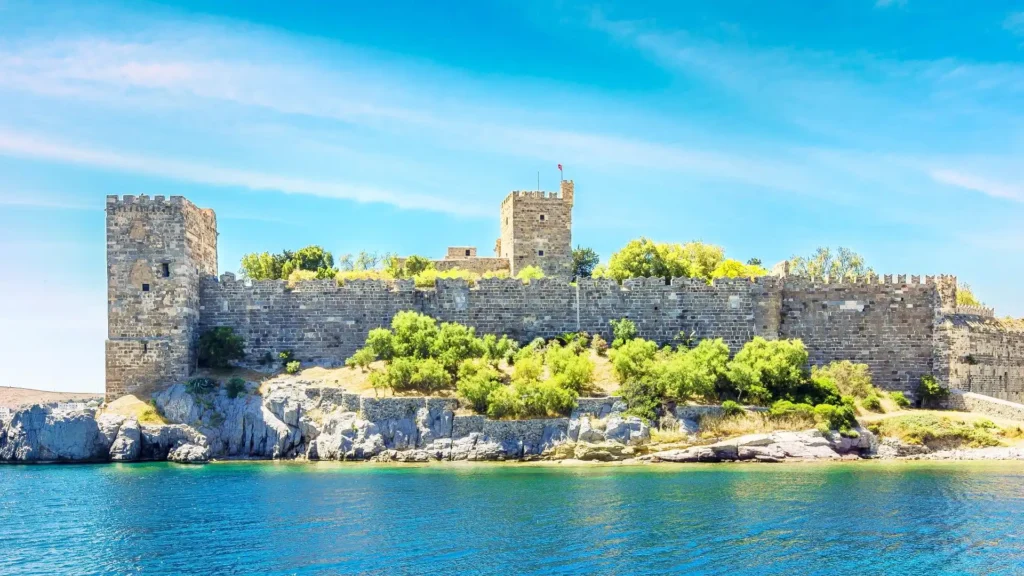
Bodrum Castle, overlooking the harbour and the town, is a striking example of medieval architecture. Built by the Knights Hospitaller, it now houses the Museum of Underwater Archaeology.
The museum within the castle is a unique attraction, displaying ancient shipwrecks and underwater archaeological finds. It offers a glimpse into the maritime history of the Aegean and Mediterranean.
The castle’s towers and battlements offer stunning views of Bodrum and the surrounding sea. It’s a perfect spot for photography and enjoying the blend of history and natural beauty.
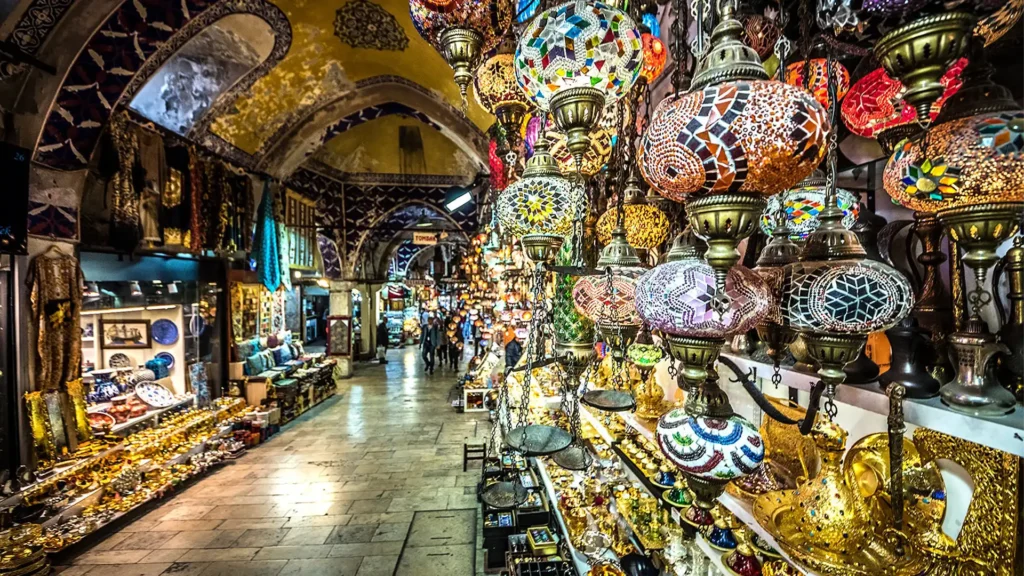
The Grand Bazaar, with its labyrinth of streets and over 4,000 shops, is one of the world’s oldest and largest covered markets. From exotic spices and Turkish delights to handmade carpets and jewellery, the bazaar is a feast for the senses.
More than just a shopping destination, the Grand Bazaar is a bustling centre of culture and commerce. The sounds of haggling, the aroma of Turkish coffee, and the kaleidoscope of colours create an atmosphere that is quintessentially Turkish.
The bazaar’s history dates back to the 15th century, and it has been a hub of trade and social interaction ever since. Strolling through its corridors is like walking through the pages of history, each shop and stall telling its own story.
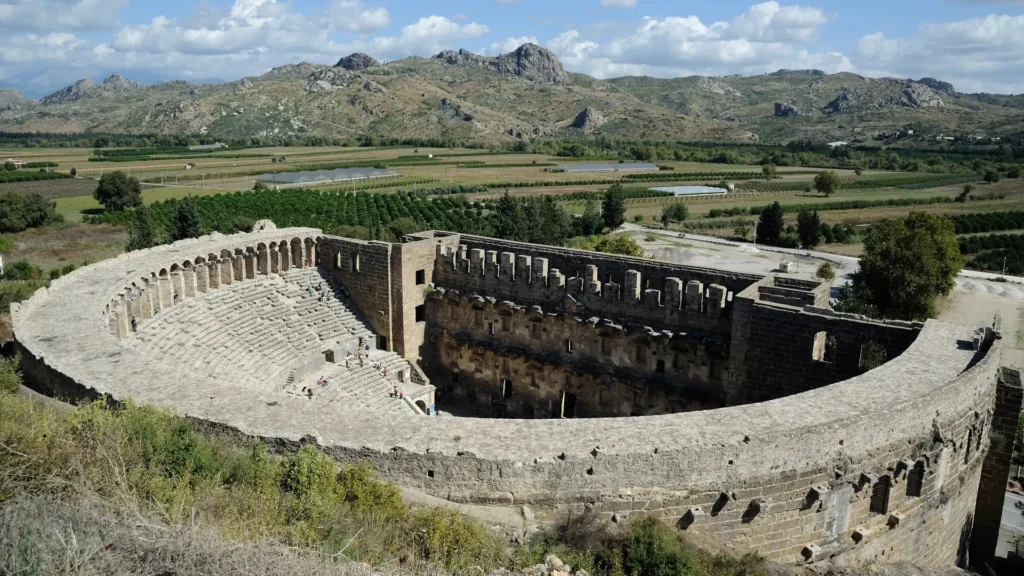
Aspendos Theatre, one of the best-preserved ancient theatres in the world, is a marvel of Roman engineering. Built in the 2nd century AD, it could seat up to 15,000 spectators and is still used for performances today, a testament to its enduring design and acoustics.
The theatre’s architecture is not only functional but also aesthetically pleasing. The stage building, adorned with intricate reliefs, provides a majestic backdrop for performances, blending art and functionality.
Attending a performance at Aspendos Theatre is a unique experience, as it allows visitors to enjoy ancient art forms in their original setting. It’s a journey back in time, where history comes alive with every performance.
Turkey’s allure lies in its ability to blend the ancient with the modern, the traditional with the contemporary. Each of these top 10 attractions offers a window into the country’s soul, revealing stories of empires, cultures, and natural wonders. Beyond these iconic sites, Turkey is dotted with countless other gems waiting to be explored, each with its own unique charm and history.
Have you visited any of these amazing places in Turkey? Share your experiences or additional recommendations in the comments below.